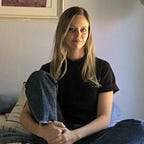Who wore the first dad cap?
One day you’re cool, the next day you’re dad.
Who is the first person you think of when I say “dad cap”? If it’s Kanye West, stop reading. If it’s Matt Lauer, or your actual dad, welcome to the fold.
The dorky headgear might be the only thing all three have in common. Unlike pro-style baseball caps or flat-brimmed snapbacks, the “dad cap” — also known as a floppy cap — sports an unstructured crown and curved brim.
If you’ve paid attention to hip-hop fashion in 2016, you’ve noticed a number of artists like Travis Scott and Drake sporting the look. Many even stock branded dad hats as tour merch. Beyonce sells her own Lemonade dad hat. From there, it turned viral fashion trend. Everyone from Kendall Jenner to Gigi Hadid donned a dad, and fans followed.
But why do we call them dad hats? The simple answer is: They’ve been around so long that it’s mainly middle-aged men who still wear them (see: Affleck, Ben).
Until the 1970s baseball caps were taboo anywhere but the baseball field. Film and television characters who wore caps were generally comical, for instance, simple-minded mechanic Gomer Pyle on The Andy Griffith Show. But as the televised sports and celebrity merged, the cap evolved from homely to heroic.
In the early 1990s “cool kids” began hacking the traditional ball cap by slicing the buckram out of the front seam, according to New York Times writer Troy Patterson. After achieving a more relaxed fit that molded the crown of the head, people curved the brim into a “perfect parabola.”
Sports apparel brand ’47 spotted the trend among college-aged preps and frat boys, some of whom even put their Yale or Nautica hats through the dishwasher to wear them down, later earning them the nickname “whitehats.” The company began selling a new era of broken-in, casual cap.
Meanwhile, baseball cap mega-retailer New Era signed with MLB in 1993 to become an exclusive supplier of on-field caps for the MLB. By doubling down on sports apparel, New Era doubled its revenue in four years. Filmmaker Spike Lee helped grow demand by ordering a custom red Yankees hat in 1996, which heralded the bespoke cap market that still thrives today. The baseball cap had exploded as a customizable fashion statement, a status symbol in its own right.
But as with every fad, the unstructured cap went from supernova to superdud. “It was hot for about eight years, from about 1995 to 2003,” ’47 co-owner Steven D’Angelo said. They were cheap and easily branded, stocked in goodie bags at every corporate fundraiser. “It continued simmering, for oldsters,” writes Patterson. The floppy cap had become fashion for the olds.
Today, the snapback and dad cap rule the fashion bubble again. Sites like Lids have their own “dad cap” sections. Fader writer Lakin Starling says the style’s restored popularity is due to its vast, inexpensive “potential to express both comradery and individuality,” which may as well be the slogan of youth.
Matt Lauer who?
